Posted by Elena del Valle on August 13, 2014
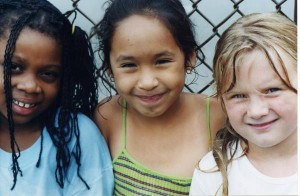
Photo: U.S. Census Bureau, Public Information Office (PIO)
Unsure about your race or ethnicity? You’re not alone. Almost 10 million (9.8 million) people varied their ethnicity responses between the 2000 and the 2010 censuses. That represents 6 percent of the population of 168 million who changed their minds about their identity between the two national demographic surveys, according to Preliminary Results from America’s Churning Races: Race and Ethnic Response Changes Between Census 2000 and the 2010 Census.
The shift may be explained at least in part due to questionnaire design changes, the report indicates. Analysts observed a race response change among American Indians, Alaska Natives, Native Hawaiians and Other Pacific Islanders, people who reported multiple races, and Hispanics who reported a race. The researchers found little variation among single race non Hispanic whites, blacks, and Asians.
“Compared to adults, children and adolescents may be more likely to change their race/Hispanic responses for two reasons: childhood and adolescence are times of personal identity development and young people’s information was probably reported by their parents in 2000 but may be self-reported in 2010,” researchers said.
The most common change in responses was from Some Other Race (SOR) to single race white among those who identified (or were identified by someone in the household) as Hispanic in both the 2000 and the 2010 censuses. The second most common response change was from single race white to SOR for those who reported (or were reported as) Hispanic in the two censuses.
Specifically, 710,019 respondents changed from white to Hispanic white, and 417,855 changed from Hispanic white to white between one census and the next, according to an Associated Press article (10 million switched ethnicity or race ID on census forms by Jesse J. Holland). Races in the Census are white; black or African American; American Indian or Alaska Native; Asian; Native Hawaiian or Other Pacific Islander; and other for those with more than one race. In addition, there is a Hispanic ethnic category. The article also pointed to people who were children and or living in the West when the 2000 Census took place as the most likely to have modified their responses between the government surveys.
The paper was authored by Sonya Rastogi, PhD, Senior Researcher, Center for Administrative Records Research and Applications (CARRA), Carolyn Liebler, PhD, Assistant Professor of Sociology, University of Minnesota, Leticia Fernandez, PhD, Researcher, CARRA, and James Noon, Researcher, CARR.
Posted by Elena del Valle on August 8, 2014
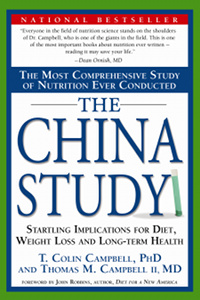
The China Study
Photos: BenBella Books, Inc.
A good diet is one of the most important ways to achieve and maintain optimum health, say T. Colin Campbel, Ph.D. and Thomas M. Campbell II, M.D. In The China Study Startling Implications for Diet, Weight Loss and Long-Term Health (BenBella Books, $16.95), published in 2006, and the Spanish language edition El Estudio de China Efectos Asombrosos de la Dieta, la Pérdid ade Peso y la Salud a Largo Plazo (BenBella Books, $17.95), published in 2012, the father discusses his reasoning and the data he relied on to reach his conclusions. He points out that despite spending more per person on health care than any other country the United States is struggling with the health of its citizenry.
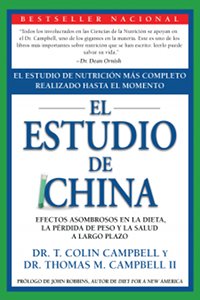
El Estudio de China
Obesity, diabetes, cardiac disease, high cholesterol, and cancer are among the best known signs of trouble. They and other illnesses lead half of Americans to take prescription medications every week, Colin Campbell explains in the Introduction. The 419-page softcover book, (481 pages in the Spanish edition) is divided into four main sections: The China Study, Diseases of Affluence, The Good Nutrition Guide, and Why Haven’t You Heard This Before?
As director of a comprehensive study of diet, lifestyle and disease Colin Campbell learned that the people who got the most chronic diseases were the ones who ate the most animal products. He went on to discover that the effects of such diseases could be reversed with a healthy diet. He was surprised to discover the level of confusion that exists due to misinformation.
Based on his many decades of diet and health research he has become convinced that heart disease can be prevented and even reversed without surgery or drugs. Eating the right foods is the secret, he believes.
In Appendix C, he discusses the role of vitamin D in health, pointing out that people living in places with low sunshine are more prone to certain diseases such as type 1 diabetes, multiple sclerosis, rheumatoid arthritis, osteoporosis, and breast, colon and prostate cancer. One quarter of the amount of sunshine needed to produce a slight redness to your skin, two to three times a week, will produce and store the necessary amount of vitamin D, according to the author. An excess of animal protein which create an acidic blood environment can affect the vitamin D process in the body, he points out.

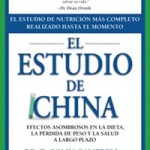
Click to buy El Estudio de China
Comments:
Filed Under: Books
Posted by Elena del Valle on August 1, 2014
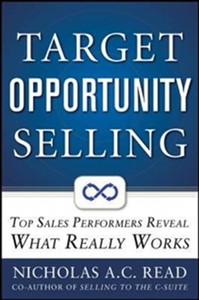
Target Opportunity Selling
Photo: McGraw-Hill
In Target Opportunity Selling: Top Sales Performers Reveal What Really Works (McGraw-Hill, $28), Nicholas A.C. Read, author of Selling to the C-Suite, outlines the strategies he believes are successful for top corporate sellers. Read begins by introducing a model, The Sales Expansion Loop, which he says assigns Marketing, Sales, Management, and Service roles for targeting sales opportunities throughout the stages of a long-lead sale.
He based the Sales Expansion Loop on first hand interviews with hundreds of sales professionals around the world. His recommendations are based on 20,000 hours with business to business sellers in companies of various sizes and diverse locations, according to the book.
The 316-page hardcover, book published this year, is divided into 15 chapters: Beyond the Sales Funnel, Research, Contact, Precision Questions, Qualify Their Interest, Qualify Your Seat at the Table, Qualify Your Ability to Win, Social Capital, Find the Influencers, Align To Key Stakeholders, Sell Your Solution, Form A Competitive Strategy, Establish Your Proof, Compete on Value, and Closing and Opening.
In the final chapter, the author recommends that sellers get together with their customers to create a report of sorts in which they address after the sale issues, measurement and results. He also mentions that sellers request testimonials from happy customers, take their pictures and display them. He says “Top sellers collect case studies and reference stories like trophies…”
Read, former executive director at Ernst & Young, is the founder and managing partner of the SalesLabs. He is a speaker, consultant, and columnist.
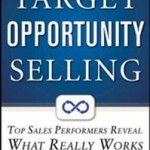
Click to buy Target Opportunity Selling
Comments:
Filed Under: Books
Posted by Elena del Valle on July 25, 2014
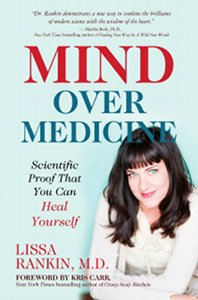
Mind Over Medicine
Photo: LissaRankin.com
Lissa Rankin, MD, a physician and New York Times bestselling author, is convinced that the lessons she learned over years of medical school and clinical practice are not all set in stone. In her 2013 book Mind Over Medicine: Scientific Proof That You Can Heal Yourself (Hay House, $24.95), she shares the process that led her to discover what she believes is a better way to health, and what it might mean to patients.
Your mental attitude, the author says, is the most important factor in your health even ahead of sleep, nutrition, weight, exercise and lifestyle. According to her website, she is “on a grass roots mission to heal health care by repairing the doctor-patient relationship, while empowering both patients and health care providers to marry the best of Western medicine with mind-body approaches scientifically proven to activate the body’s natural self-repair mechanisms.”
In the 259-page hardcover book she says that for more than 50 years the medical establishment has been proving the mind can heal the body. In a candid easy to read style she shares her personal growth path and conclusions.
She wraps up the book with six steps she believes may optimize a body’s natural self-repair mechanisms. She proposes that it is essential to believe you can heal yourself with the support of others. Listening to your body’s signals or what she calls the Inner Pilot Lights is key, she says. If after seeking medical advice you don’t have a diagnosis identify what the source of your problem might be and figure out a way to address it, remembering to be your own healthcare advocate, the author suggests. Realize that the results you obtain may not be those you sough initially, she says.
Rankin is founder of the Whole Health Medicine Institute training program for physicians and other health care providers. When not spreading her message, she likes to hike, paint, and practice yoga.
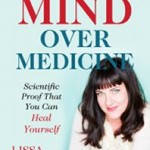
Click to buy Mind Over Medicine
Comments:
Filed Under: Books
Posted by Elena del Valle on July 16, 2014
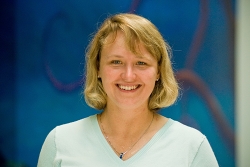
Rebecca H. Johnson, M.D., co-author, Increase in Testicular Germ Cell Tumor Incidence Among Hispanic Adolescents and Young Adults in the United States
Photos: Stephen M. Schwartz, Rebecca H. Johnson, Franklin L. Chien
An article published in Cancer, a a peer-reviewed journal of the American Cancer Society, points to a recent substantial increase in testicular germ cell tumor incidence among Hispanic adolescents and young adults in the United States. The trend was not evident among non-Hispanic whites.
Testicular cancer, among the most common types of cancer in adolescent and young adult men, is said to be one of the most readily treatable. The researchers concluded that heightened awareness is advisable concerning the increasing risk of testicular cancer among Hispanic adolescents and young adults. They recommend additional research to determine the cause of the trend.
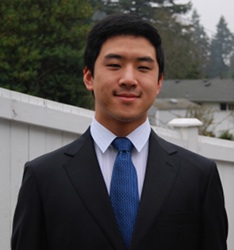
Frank Chien, co-author, Increase in Testicular Germ Cell Tumor Incidence Among Hispanic Adolescents and Young Adults in the United States
The article, Increase in Testicular Germ Cell Tumor Incidence Among Hispanic Adolescents and Young Adults in the United States, was authored by Franklin L. Chien, BA, Rebecca H. Johnson, M.D., and Stephen M. Schwartz, Ph.D., MPH.
They found that between 1992 and 2010, the annual incidence of testicular cancer in 15 to 39 year-old Hispanic whites increased 58 percent from 7 cases per 100,000 in 1992 to 11 cases per 100,000 by 2010.
Incidence rates increased in cities for different subtypes of testicular cancer and for all stages of the disease. In the same 19 year interval, testicular germ cell tumor incidence among non Hispanic white young adults increased 7 percent, from 12 to 13 per 100,000. During the 2000 to 2010 period, incidence rates rose in Hispanic whites, but the researchers observed no significant trends in incidence rates among non Hispanic whites.
“Hispanic Americans comprise the fastest growing ethnic group in the United States. Until only recently, cancer incidence data for this population has been too sparse to accurately analyze testicular cancer trends among Hispanic men,” Johnson said in a press release. “The increasing rate of testicular cancer in adolescent and young adult Hispanic males, combined with the rapid expansion of the Hispanic population in the United States, is projected to have a measurable impact on the United States healthcare system.”
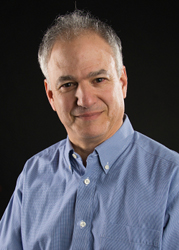
Steve Schwartz, Ph.D., MPH, co-author, Increase in Testicular Germ Cell Tumor Incidence Among Hispanic Adolescents and Young Adults in the United States
“Unfortunately, there’s nothing that Hispanic men can do to minimize their risk, since nothing is known for certain about modifiable risk factors,” said Schwartz by email in response to a question about preventive measures Hispanic men might take.
Johnson noted that, in the past, non Hispanic white men have had the highest rate of testicular cancer of all racial and ethnic groups in the United States. Should the trend found in this study continue, the rate of testicular cancer among Hispanic Americans will outpace that of non Hispanic white men within the next few years.
Posted by Elena del Valle on July 11, 2014
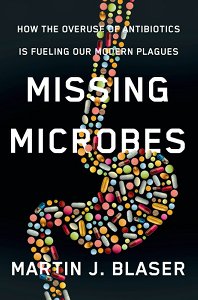
Missing Microbes
Photo: Henry Holt and Company, Troi Santos NYULMC
The health of our body depends in part on the balance the exists between bacterial and human cells. Experts estimate that for hundreds of thousands of years bacterial and human cells have coexisted in a peaceful symbiosis that resulted in the relative health of our bodies, and that we acquire microbes by the time we are three years old. They thrive in our gut, noses, mouth, and skin, and they play an essential role in keeping us healthy. The excessive dependence of modern medicine on antibiotics and Cesarian sections is threatening the equilibrium that allows us to combat diseases by destroying important microbes and making us sick, according to Martin Blaser, M.D., director of the Human Microbiome Project at New York University.
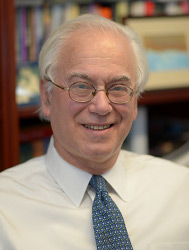
Martin Blaser, M.D., author, Missing Microbes
In Missing Microbes How the Overuse of Antibiotics Is Fueling Our Modern Plagues (Henry Holt, $28), Blaser examines how drugs considered at one point the solution to many health problems may be playing a role in the rise of obesity, asthma, allergies, diabetes, and certain forms of cancer. He believes exposure to antibiotics in early life is among the greatest dangers to our health, pointing out that American children receive on average seventeen courses of antibiotics before the age of twenty. He is concerned that many children are growing without all the microbes they would have had but for the antibiotics they receive.
While he doesn’t propose the elimination of antibiotics or C-sections from the practice of medicine, in the 273-page hardcover book he suggests we examine their use closely. At the same time, he suggests that we search for ways to replace the missing microbes. Blaser, who
has studied the role of bacteria in human disease for over 30 years, founded the Bellevue Literary Review.
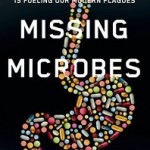
Click to buy Missing Microbes
Comments:
Filed Under: Books
Posted by Elena del Valle on June 27, 2014
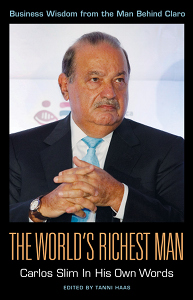
The World’s Richest Man
Photos: Agate Publishing, Inc.
Do rich and powerful businessmen share life lessons when they speak? Publishing company Agate executives think so. They launched In Their Own Words, a series featuring quotes from Steve Jobs, Bill Gates, Warren Buffett, Mark Zuckerberg, Richard Branson and most recently Carlos Slim, one of the wealthiest businessmen in the world. The World’s Richest Man: Carlos Slim in His Own Words (Agate Publishing, $10.95) edited by Tanni Haas, Ph.D. was published this year.
In addition to his wealth, Slim is also known because of he is part owner of the famous New York Times Company. The Mexico born businessman has a fortune estimated at $72 billion; lives in relatively modest home in Mexico City; and has transferred day to day management of his empire to his three sons, according to the Introduction.
A sample quote from the 148-page softcover book, from the Academy of Achievement, December 2, 2007, is: “I think that work is not only a social responsibility, but it is an emotional need. You need to work. You need to do things. You need to be active. You cannot be lazy.”
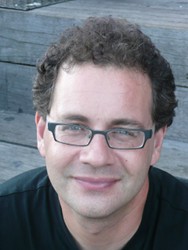
Tanni Haas, Ph.D., editor, The World’s Richest Man
The book is organized by topic to facilitate browsing, including Business and Investment, Leadership, Personal, Philanthropy and Education, and Politics and Economics. Agate B2’s In Their Own Words series titles are I, Steve: Steve Jobs In His Own Words, edited by George Beahm, a New York Times bestseller; Impatient Optimist: Bill Gates In His Own Words, edited by Lisa Rogak; The Oracle Speaks: Warren Buffett In His Own Words, edited by David Andrews, and Boy Billionaire: Mark Zuckerberg In His Own Words, edited by George Beahm. Haas, professor, City University of New York Brooklyn College, is author of Making It in the Political Blogosphere and The Pursuit of Public Journalism.
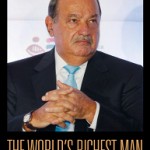
Click to buy The World’s Richest Man
Comments:
Filed Under: Books
Posted by Elena del Valle on June 19, 2014
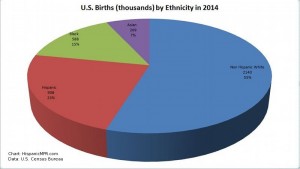
U.S. Births in 2013 by Ethnicity – click to enlarge
What’s the opposite of a baby boom (as in the Baby Boomer Generation)? A baby bust. Last year, 281,000 fewer babies were born than the United States Census Bureau had projected. Instead of 4,238,995 births there were only 3,957,577.
As a result of the bust, non Hispanic whites, with 54 percent of new babies, represent the majority of births. The Census Bureau anticipated only 49 percent of babies would be non Hispanic white.
In 2013, more non Hispanic white babies were born than the Census Bureau had projected. That is 2,140,272 rather than the projected 2,077,212 babies were born. On the other hand, 19 percent fewer Hispanic women gave birth than the Census Bureau had projected. Less than one million (907,859) babies were born to Hispanic mothers instead of the projected 1,122,069.
Following are the 2013 births and percent distribution by race and ethnicity: Asian 268,559 (6.8 percent), Black 587,612 (14.8 percent), Hispanic 907,859 (22.9 percent), and Non Hispanic white 2,140,272 (54.1 percent), according to American Consumers Newsletter June 2014.




























